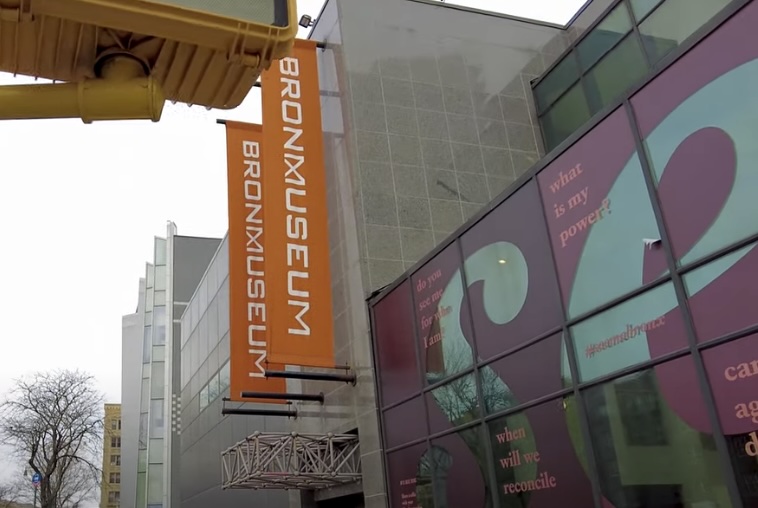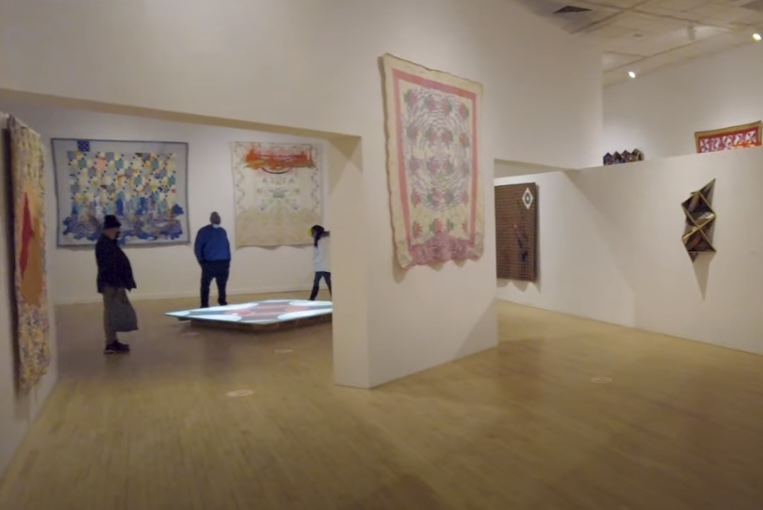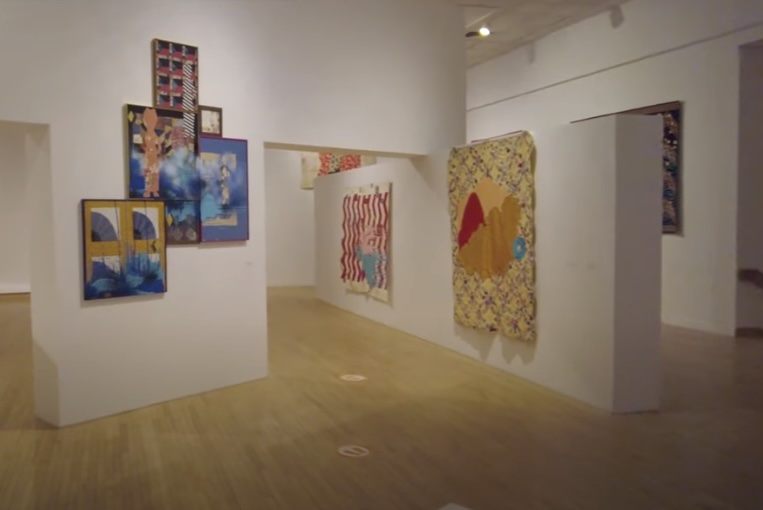New York City, a melting pot of culture, art, and history, is home to an array of iconic museums. Among them, the Bronx Museum of the Arts stands out as a vibrant hub for contemporary art, particularly known for its focus on diverse cultural backgrounds. This article delves into the heart of the Bronx Museum, exploring its history, collections, and the unique role it plays in the arts community.
The History of the Bronx Museum

The Bronx Museum of the Arts, commonly known as the Bronx Museum, holds a significant place in the cultural landscape of New York City. Established in 1971, it has gone through several key developments and transformations, making it a vital institution in the Bronx and beyond. This educational content will provide a detailed account of the history of the Bronx Museum, highlighting its founding, the introduction of programs for underrepresented artists in the 1980s, and a major renovation and expansion in 2006.
Foundation of the Bronx Museum (1971)
The Bronx Museum of the Arts was founded in 1971 in response to the growing demand from the local community for a cultural institution that would cater to their artistic needs. The Bronx, often overshadowed by Manhattan in the realm of arts and culture, had a rich and diverse population that deserved its own platform for artistic expression. The establishment of the museum aimed to bridge this gap and provide the Bronx with a dedicated space for art and cultural exploration.
Introduction of Programs for Underrepresented Artists (1980s)
During the 1980s, the Bronx Museum made a significant stride in its evolution by introducing programs that focused on underrepresented artists. This development was a testament to the museum’s commitment to inclusivity and cultural diversity. These programs served as a platform for artists who had historically been marginalized in the art world, allowing them to showcase their work and contribute to the broader artistic discourse. This initiative not only enriched the museum’s offerings but also helped foster a sense of belonging within the local community.
To illustrate this development, here is a table summarizing some of the key programs introduced in the 1980s:
| Year | Program Name | Purpose |
| 1982 | “Emerging Artists” | Highlight and support emerging talents |
| 1985 | “Community Arts” | Engage with the local community through art |
| 1987 | “Diversity in Art” | Promote inclusivity and diversity in art |
Major Renovation and Expansion (2006)
In 2006, the Bronx Museum underwent a significant renovation and expansion project that further solidified its role as a cultural cornerstone in the Bronx. This project not only enhanced the physical infrastructure of the museum but also expanded its capacity to engage with the community and exhibit diverse art forms. Here are some key aspects of the major renovation and expansion:
- Architectural Upgrade: The renovation included architectural improvements, modernization of exhibition spaces, and the addition of state-of-the-art facilities. The physical transformation of the museum aimed to create a welcoming and inspiring environment for visitors and artists alike.
- Increased Gallery Space: The expansion provided the Bronx Museum with additional gallery space, allowing it to host larger and more diverse exhibitions. This expansion was essential in accommodating the growing collection and facilitating the display of artworks from various cultures and backgrounds.
- Community-Centered Facilities: The redesigned museum also included community-centered facilities, such as educational spaces, workshops, and gathering areas. These additions strengthened the museum’s commitment to community engagement and cultural understanding.
Collections and Exhibitions

At the heart of The Bronx Museum’s mission is a commitment to showcasing the works of artists from diverse backgrounds, with a particular emphasis on those of African, Asian, and Latin American descent. This focus mirrors the multicultural composition of the Bronx itself and ensures that the museum remains a vibrant hub of artistic expression. The collections are thoughtfully curated to encompass a wide range of artistic media, including paintings, sculptures, photographs, and multimedia installations.
Table: Highlighted Collections
| Section | Description |
| Artist in the Marketplace (AIM) | AIM is a program dedicated to supporting emerging artists at The Bronx Museum. It provides a platform for budding talents to showcase their work, offers workshops and mentorship opportunities, and hosts exhibitions to help artists refine their craft and gain exposure within the art world. AIM plays a crucial role in the museum’s commitment to nurturing new talent and fostering creativity. |
| Permanent Collection | The Bronx Museum’s permanent collection comprises over 1,000 contemporary art pieces dating from the mid-20th century to the present day. This extensive collection serves as a testament to artistic evolution, documenting different eras and artistic movements. Visitors can explore the museum’s walls to witness the transformation of art, from post-war expressionism to contemporary multimedia installations. |
Rotating Exhibitions
One of the museum’s most exciting aspects is its commitment to continuously refreshing its exhibitions. This ensures that visitors can always look forward to new and thought-provoking displays. The Bronx Museum’s exhibitions often delve into social and political themes, resonating with the diverse audience it attracts. Here are some of the recent and upcoming exhibitions:
- “Identity Unveiled”: This exhibition explores the concept of identity through the works of artists from various cultural backgrounds. It challenges viewers to consider how identity is shaped and represented in contemporary society.
- “Global Perspectives”: A dynamic exhibition featuring artists from around the world, “Global Perspectives” offers a cross-cultural exploration of art. It showcases how artists from diverse backgrounds interpret global issues, offering unique insights and perspectives.
- “Activism Through Art”: An exhibition that aligns with the Bronx’s rich history of social activism, “Activism Through Art” highlights the role of art in driving social and political change. Visitors can engage with thought-provoking pieces that inspire dialogue and action.
Educational Opportunities
The Bronx Museum goes beyond mere exhibition by providing educational opportunities to enhance visitors’ understanding and appreciation of art. These include:
- Guided Tours: The museum offers guided tours that delve into the history and significance of various artworks. These tours cater to different age groups and interests, making art accessible to everyone.
- Workshops and Classes: Various workshops and classes are available for aspiring artists, allowing them to develop their skills and gain insights from experienced instructors.
- Lectures and Discussions: The museum hosts lectures and discussions with artists and experts, providing in-depth insights into the art world and the themes explored in its exhibitions.
Educational Programs and Community Engagement
Education is a core component of The Bronx Museum’s mission. The institution is committed to providing a diverse range of educational programs and workshops that aim to engage audiences of all ages. These initiatives not only enhance the understanding of art but also contribute to community engagement and cultural enrichment. Let’s delve into the educational programs offered by The Bronx Museum:
Family Affair
The Family Affair program at The Bronx Museum is designed to create an inclusive and interactive environment where children and families can engage with art. This initiative consists of a variety of events and activities that cater to different age groups and interests. Some key components of the Family Affair program include:
| Program Features | Description |
| Family Workshops | Hands-on art workshops suitable for all ages. |
| Storytelling Sessions | Interactive storytelling sessions related to art. |
| Art Exploration Tours | Guided tours that encourage active participation. |
| Art Supplies and Materials | Provided for participants during workshops. |
The Family Affair program promotes creativity, critical thinking, and family bonding through art. It aims to introduce children to the world of art in a fun and accessible manner, fostering a lifelong appreciation for creativity and culture.
Teen Programs
The Bronx Museum recognizes the importance of nurturing the artistic talents of teenagers. The Teen Programs offer a platform for young individuals to express themselves through art and explore potential careers in the arts. Here are the key aspects of the Teen Programs:
| Program Components | Description |
| Art-Making Workshops | Hands-on workshops covering various art forms. |
| Portfolio Development | Guidance in creating portfolios for art schools. |
| Career Workshops | Insights into career paths in the arts. |
| Exhibitions and Showcases | Opportunities to display artwork at the museum. |
The Teen Programs not only enhance artistic skills but also provide valuable guidance for those interested in pursuing a career in the arts. This initiative empowers teenagers to explore their creative potential and build a strong foundation for their artistic journey.
Senior Programs
The Bronx Museum recognizes the importance of engaging older adults in the community. The Senior Programs are specifically tailored to cater to the interests and needs of this demographic. Here are some key elements of the Senior Programs:
| Program Highlights | Description |
| Art Appreciation Sessions | Discussions and workshops exploring art history. |
| Creative Aging Workshops | Art activities designed to promote mental agility. |
| Social Gatherings | Events fostering a sense of community and belonging. |
| Accessible Facilities | Facilities designed to accommodate seniors. |
The Senior Programs promote social interaction, intellectual stimulation, and artistic expression among older adults. They offer a welcoming and inclusive environment where seniors can continue to learn and grow.
Community Engagement
In addition to its educational initiatives, The Bronx Museum plays a vital role in community engagement. It actively seeks to make art accessible to everyone in the community, irrespective of age or background. Here are some of the ways in which the museum engages with the community:
- Free Admissions: The Bronx Museum offers free admissions to its exhibitions, ensuring that cost is not a barrier to accessing art. This open-door policy makes art accessible to a wide range of community members.
- Community Events: The museum organizes a variety of community events, including art fairs, cultural festivals, and neighborhood gatherings. These events bring the community together and create opportunities for cultural exchange.
- Cultural Talks: The Bronx Museum hosts talks, lectures, and panel discussions on art and cultural topics. These events encourage dialogue, critical thinking, and a deeper understanding of art within the community.
Visitor Information
If you are planning to visit the Bronx Museum, you are in for a unique cultural experience. The museum is conveniently situated at 1040 Grand Concourse in Bronx, New York, making it easily accessible by public transportation. In this detailed guide, we will provide you with essential visitor information to ensure you have a seamless and enjoyable visit.
Location and Accessibility
The Bronx Museum is situated at 1040 Grand Concourse, Bronx, NY. This location is easily reachable through various modes of transportation, making it a convenient destination for visitors from within the city and beyond. Whether you are traveling by subway, bus, or car, you can find your way to the museum without hassle. Here’s a quick overview of the accessibility options:
- Subway: The museum is conveniently located near several subway stations, including the 167th Street station (B, D, and 4 lines) and the 161st Street-Yankee Stadium station (B, D, and 4 lines). Both stations are within walking distance of the museum.
- Bus: Numerous bus routes also serve the area, providing additional transportation options. You can check the Metropolitan Transportation Authority (MTA) website or use their app for up-to-date bus schedules and routes.
- Car: If you prefer to drive, there are parking facilities available nearby. Be sure to check for parking regulations and fees in the vicinity.
- Accessibility: The Bronx Museum is committed to ensuring that all visitors, including those with disabilities, can enjoy its exhibits and facilities. The museum is fully accessible, with features such as ramps, elevators, and wheelchair-accessible restrooms to accommodate everyone.
Museum Details
Before heading to the Bronx Museum, it’s essential to have some key details at your fingertips:
- Opening Hours: The museum’s opening hours may vary, so it’s advisable to check the official Bronx Museum website for the most up-to-date information. This will help you plan your visit accordingly and avoid any disappointment due to unexpected closures or changes in hours.
- Admission: One of the most attractive aspects of the Bronx Museum is that it offers free admission to all visitors. However, the museum encourages donations to support its mission and ongoing programs. Your contributions are greatly appreciated and help sustain the museum’s cultural offerings.
Visitor Tips
To make the most of your visit, here are some additional tips:
- Exhibitions: The Bronx Museum regularly features a diverse range of exhibitions, so be sure to check their website for current and upcoming exhibitions that might pique your interest. This can help you plan your visit around specific themes or artists you’re keen to explore.
- Guided Tours: If you’re interested in a more in-depth experience, inquire about guided tours or educational programs offered by the museum. These can provide valuable insights into the artwork and the museum’s history.
- Photography: While many museums have restrictions on photography, it’s a good idea to check the Bronx Museum’s policy regarding photography and whether it allows for personal or professional photography during your visit.
- Gift Shop: Don’t forget to visit the museum’s gift shop, where you can find unique souvenirs, books, and art-related items to take home as mementos of your visit.
Conclusion
The Bronx Museum of the Arts is more than just an art museum; it’s a community hub that celebrates the rich cultural diversity of the Bronx and New York City. With its dynamic exhibitions, educational programs, and commitment to accessibility, the Bronx Museum continues to be an essential destination for art lovers and cultural explorers alike. Whether you’re a local resident or a visitor to the city, a trip to the Bronx Museum promises a rewarding and enriching experience.
FAQ
Q: Is photography allowed in the Bronx Museum?
A: Yes, photography for personal use is generally allowed, but some exhibitions may have restrictions.
Q: Does the Bronx Museum offer guided tours?
A: Yes, the museum offers guided tours, which can be booked in advance through their website.
Q: Can I host a private event at the Bronx Museum?
A: Yes, the Bronx Museum offers space for private events. Contact the museum for more details.
Q: Are there dining facilities at the Bronx Museum?
A: While the museum itself does not have a restaurant, there are numerous dining options in the surrounding area.
Q: Does the Bronx Museum offer internships or volunteer opportunities?
A: Yes, the museum offers various internships and volunteer opportunities for those interested in art and community work.
